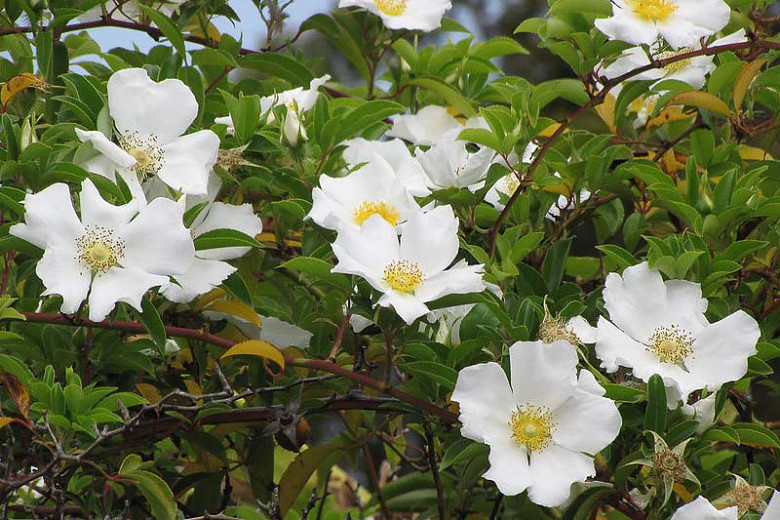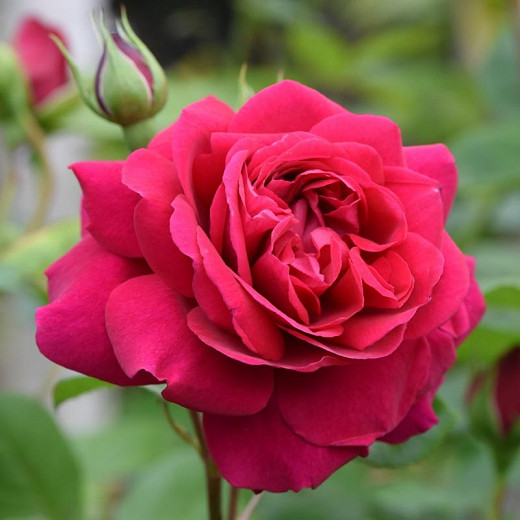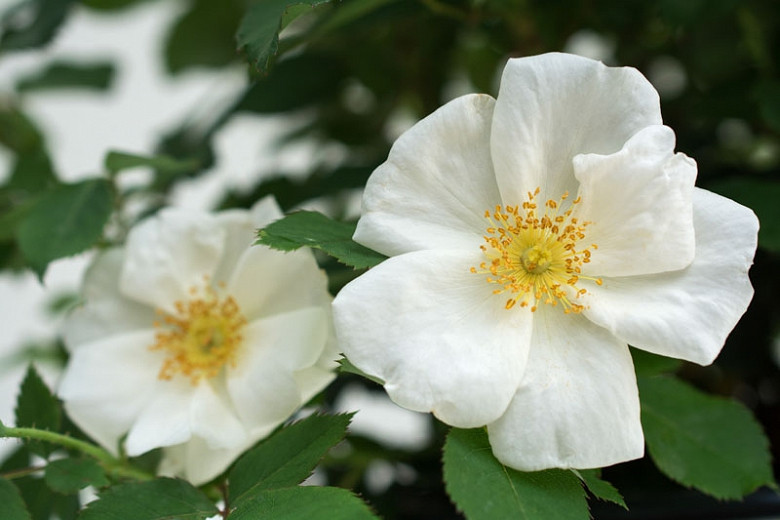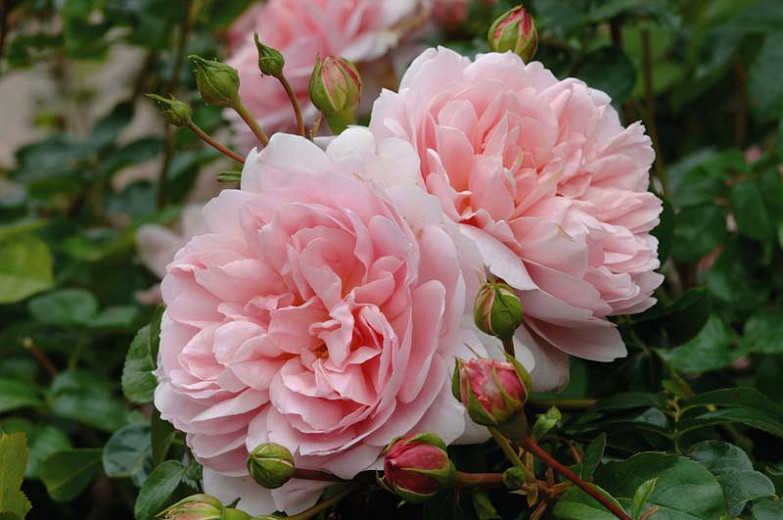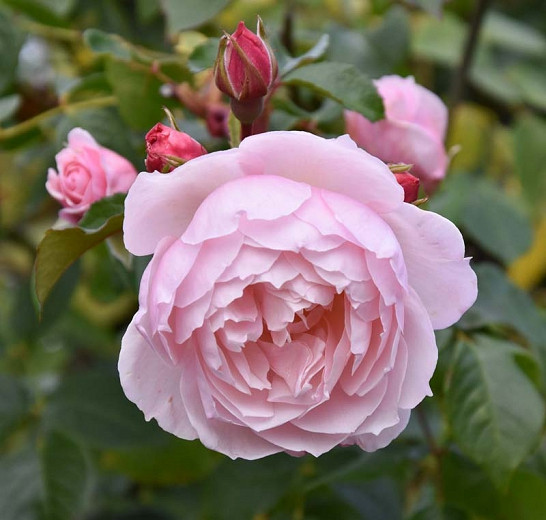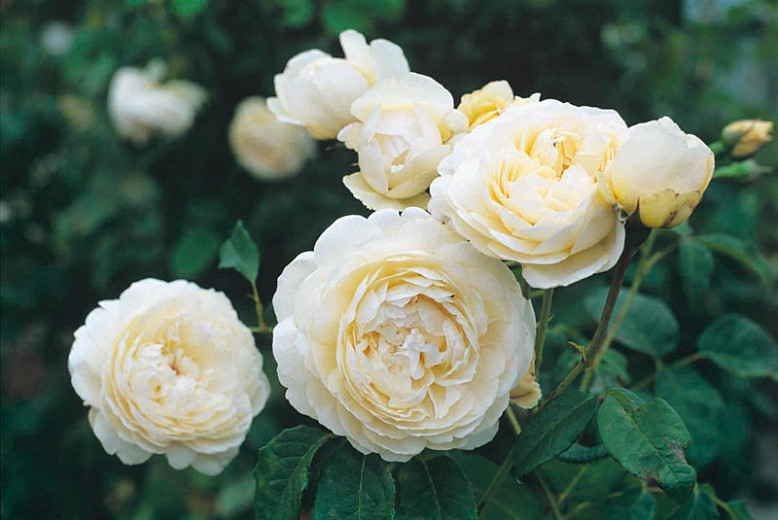Rosa laevigata (Cherokee Rose)
Rosa laevigata (Cherokee Rose) is a very large semi-evergreen rambling rose with a profusion of large, single, slightly fragrant, crisp white flowers, 4 in. across (10 cm), adorned with a conspicuous bouquet of golden stamens. Blooming for weeks in late spring or early summer, the flowers are nicely displayed on the long, arching canes armed with recurved prickles. They stand out against the foliage of glossy dark green leaves made up of 3 finely toothed leaflets.
Rosa laevigata (Cherokee Rose) is a very large semi-evergreen rambling rose with a profusion of large, single, slightly fragrant, crisp white flowers, 4 in. across (10 cm), adorned with a conspicuous bouquet of golden stamens. Blooming for weeks in late spring or early summer, the flowers are nicely displayed on the long, arching canes armed with recurved prickles. They stand out against the foliage of glossy dark green leaves made up of 3 finely toothed leaflets. The blossoms are followed by pear-shaped, bristly, brownish orange-red hips, 2 in. long (5 cm). Native to China, Rosa laevigata was brought to the U.S. in early colonial times and cultivated by Cherokee Indians, hence the common name. Evergreen in mild climates.
- Blooms in one single flush in late spring to early summer.
- Grows up to 6-20 ft. tall (180-600 cm) and 3-6 ft. wide (90-180 cm). May spread somewhat aggressively in certain parts of the southeastern U.S. It is listed as an invasive plant in Alabama, Georgia and South Carolina.
- Best grown in full sun, in fertile, humus-rich, moist, well-drained soils. Tolerates some light shade, but best flowering and disease resistance generally occur in full sun. Summer mulch helps retain moisture, keeps roots cool and discourages weeds. For best flowering, apply a balanced fertilizer and mulch in late winter or early spring. Protect from frost and cold drying winds.
- This rambler is a good choice for wall-side borders, cottage gardens or Mediterranean gardens. It will quickly blanket arbors, arches, pergolas or other garden structures with its semi-evergreen foliage. Can be pruned into a 6 ft. (180 cm) shrub and grown as a sprawling free-standing shrub.
- Cherokee Rose is usually not susceptible to the pests and diseases that affect many of the hybrid roses. However, it may be affected by black spot, powdery mildew, rust, aphids, beetles, borers, scale, thrips, rose midges and leafhoppers.
- Rambling roses are routinely pruned in late summer, after their show of flowers and hips.
- Propagate by semi-ripe cuttings in late summer or hardwood cuttings in the fall.
- Native to China.
- Find where this species is invasive in the United States.
Requirements
| Hardiness | 7 – 9 |
|---|---|
| Plant Type | Climbers, Roses |
| Plant Family | Rosa – Rambling Roses, Rosa – Roses |
| Exposure | Full Sun |
| Season of Interest | Spring (Late)Summer (Early,Mid,Late)Fall |
| Height | 6' – 20' (180cm – 6m) |
| Spread | 3' – 6' (90cm – 180cm) |
| Spacing | 72″ – 96″ (180cm – 240cm) |
| Water Needs | Average |
| Maintenance | Average |
| Soil Type | Clay, Loam, Sand |
| Soil pH | Acid, Alkaline, Neutral |
| Soil Drainage | Moist but Well-Drained, Well-Drained |
| Characteristics | Fragrant, Showy, Semi-Evergreen, Fruit & Berries |
| Attracts | Butterflies |
| Garden Uses | Wall-Side Borders |
| Garden Styles | Informal and Cottage, Mediterranean Garden |

